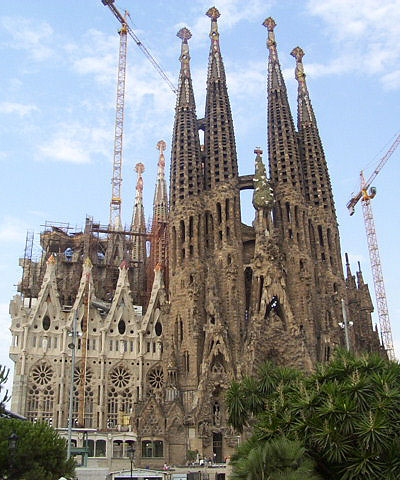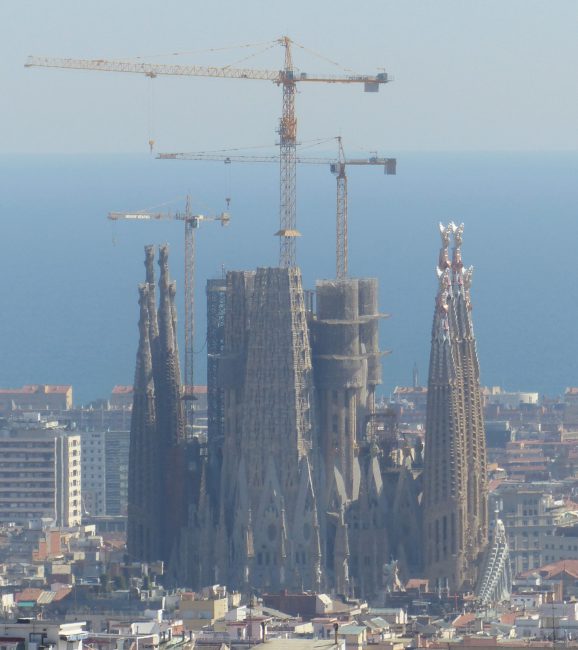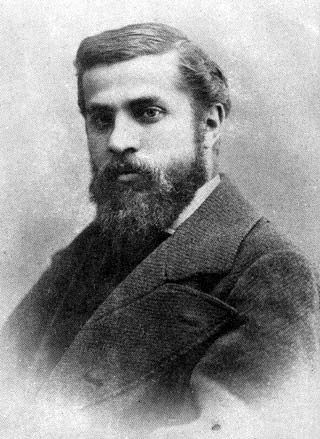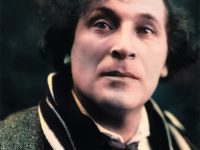
La Sagrada Familia in Barcelona, designed by Antoni Gaudi, Montrealais, CC BY-SA 3.0 Wikimedia Commons
If you are going to Barcelona, Spain, it is rather unlikely that you will leave without having visited one of the fascinating architectural creations of famous architect and designer Antoni Gaudí, the frontfigure of the so-called Catalan Modernism, who was born on June 25, 1852. Architecture, nature, religion, and the love to his home country Catalonia were the driving forces of Gaudí‘s work. His work transcended mainstream Modernisme, culminating in an organic style inspired by nature.
“There is no reason to regret that I cannot finish the church. I will grow old but others will come after me. What must always be conserved is the spirit of the work, but its life has to depend on the generations it is handed down to and with whom it lives and is incarnated”
The Son of a Copper Maker
Born in 1852 in Reus (Camp de Tarragona) and son of a copper maker, from childhood Gaudí was an attentive observer of nature and felt attracted to its forms, colours and geometry. In his school days at the School of the Piarist Fathers in Reus and at the School of Architecture in Barcelona, where he studied from 1873 to 1878, he was not known for particularly good results, but distinguished himself from the other pupils as an outstanding and creative draughtsman. So it was no wonder that his first architectural pruduction swung between a reinterpretation of historical canons with oriental influence and the recovery of medieval events. From the very beginning of his studies he worked for various architectural firms, including Francisco de Paula del Villar y Lozano, Josep Fontserè and Joan Martorell.During his student days, Gaudí attended craft workshops, such as those taught by Eudald Puntí, Llorenç Matamala and Joan Oñós, where he learned the basic aspects of techniques relating to architecture, including sculpture, carpentry, wrought ironwork, stained glass, ceramics, plaster modelling, etc. He also absorbed new technological developments, integrating into his technique the use of iron and reinforced concrete in construction.
First Clients and the Sagrada Familia
Despite his youth he received first assignments from the church as well the bourgeoisie. His first major work was the planning of a factory and a workers’ settlement for the “Sociedad Cooperativa La Obrera Mataronense” (1878 to 1882). However, the construction failed at an early stage. Among these first clients the Association of Devotees of Saint Joseph stands out because they commissioned Gaudí with the Expiatory Temple of the Sagrada Família. The idea for the building in honour of the Holy Family in Barcelona first came from Josep Maria Bocabella, a local owner of a religious bookshop and author of Christian writings. In 1866 he founded the Associación Espiritual de Devotos de San José (“Spiritual Association of the Devotees of St. Joseph”). Returning from a trip to Italy and impressed by the large churches there, he decided in 1874 to have a large church of atonement built in his city, financed by donations. Originally the Sagrada Familia was begun in 1882 by another architect Francesc de Paula del Villar y Lozano. But there have been certain divergences with the promoters and Villar y Lonzano had begun only the crypt.

La Sagrada Familia, Bewahrerderwerte, CC BY-SA 4.0 , via Wikimedia Commons
Palace and Park Güell
Thus, Gaudi took the direction of the work in 1883 and devoted all its life to the realization of this monument, which he left unfinished by his death in 1926 and which remains still under construction by today. His most famous and best client was industrialist Eusebi Güell, who entrusted him with the construction of some of his most outstanding works: a palace (Palau Güell), the crypt of the church for an industrial colony Church of Colonia Güell, some pavilions for his summer residence and also a city-garden (Park Güell).
God’s Architect
In his own time, Gaudi was both admired and criticised for the audacity and singularity of his innovative solutions. His fame on a world scale has become an unquestioned fact both in specialised circles and among the general public as an example of modernisation and renewal of 20th century architecture. Gaudí’s Roman Catholic faith intensified during his life and religious images appear in many of his works. This earned him the nickname “God’s Architect” and led to calls for his beatification. The architect never married, but after the failure of marriage intentions with a woman with whom he had fallen in love, decided on an ascetic life as a celibate layman. From 1906 until the end of 1925 he lived in a house in Park Güell, which since 1963 has reminded us of him as Casa-Museu Gaudí.

Antoni Gaudi (1852-1926)
Gaudi’s Death
On 7 June 1926, Gaudí was taking his daily walk to the Sant Felip Neri church for his habitual prayer and confession. While walking along the Gran Via de les Corts Catalanes between Girona and Bailén streets, he was struck by a passing number 30 tram and lost consciousness. Assumed to be a beggar because of his lack of identity documents and shabby clothing, the unconscious Gaudí did not receive immediate aid. Eventually some passers-by transported him in a taxi to the Santa Creu Hospital, where he received rudimentary care. By the time that the chaplain of the Sagrada Família, Mosén Gil Parés, recognised him on the following day, Gaudí’s condition had deteriorated too severely to benefit from additional treatment. Gaudí died on 10 June 1926 at the age of 73.
Catalan Modernism
Gaudí is usually considered the great master of Catalan Modernism, but his works go beyond any one style or classification. They are imaginative works that find their main inspiration in nature. Gaudí studied organic and anarchic geometric forms of nature thoroughly, searching for a way to give expression to these forms in architecture. Other preferences were quarrystones and colorful ceramic tiles, which he used as design elements in his buildings. Gaudí contemptuously rejected the Gothic buttresses as “crutches” and used sloping pillars instead. He developed his buildings during construction on the basis of sketches and models. Since Gaudí regarded a building as a work of art, he designed even the smallest details inside the building himself.
Mark Burry – Antoni Gaudi and the Status of his Drawings and Models, [9]
References and Further Reading:
- [1] Permanyer, Lluis: Gaudí of Barcelona, Edictiones Poligrafa (2012)
- [2] Zerbst, Rainer: Gaudi – The Complete Buildings, Taschen 25 Jubiläumsausgabe (2006)
- [3] Antoni Gaudi at Britannica Online
- [4] Antoni Gaudi at The Art Story
- [5] Antoni Gaudi at Wikidata
- [6] St. Peter’s Basilica in Rome, SciHi Blog
- [7] Gustav Eiffel and his famous Tower, SciHi Blog
- [8] The Sydney Opera House, SciHi Blog
- [9] Mark Burry – Antoni Gaudi and the Status of his Drawings and Models, 2006, AA School of Architecture @ youtube
- [10] Zerbst, Rainer (1988). Antoni Gaudi – A Life Devoted to Architecture. Trans. from German by Doris Jones and Jeremy Gaines. Hamburg, Germany: Taschen.
- [11] Timeline for Antoni Gaudi, via Wikidata





